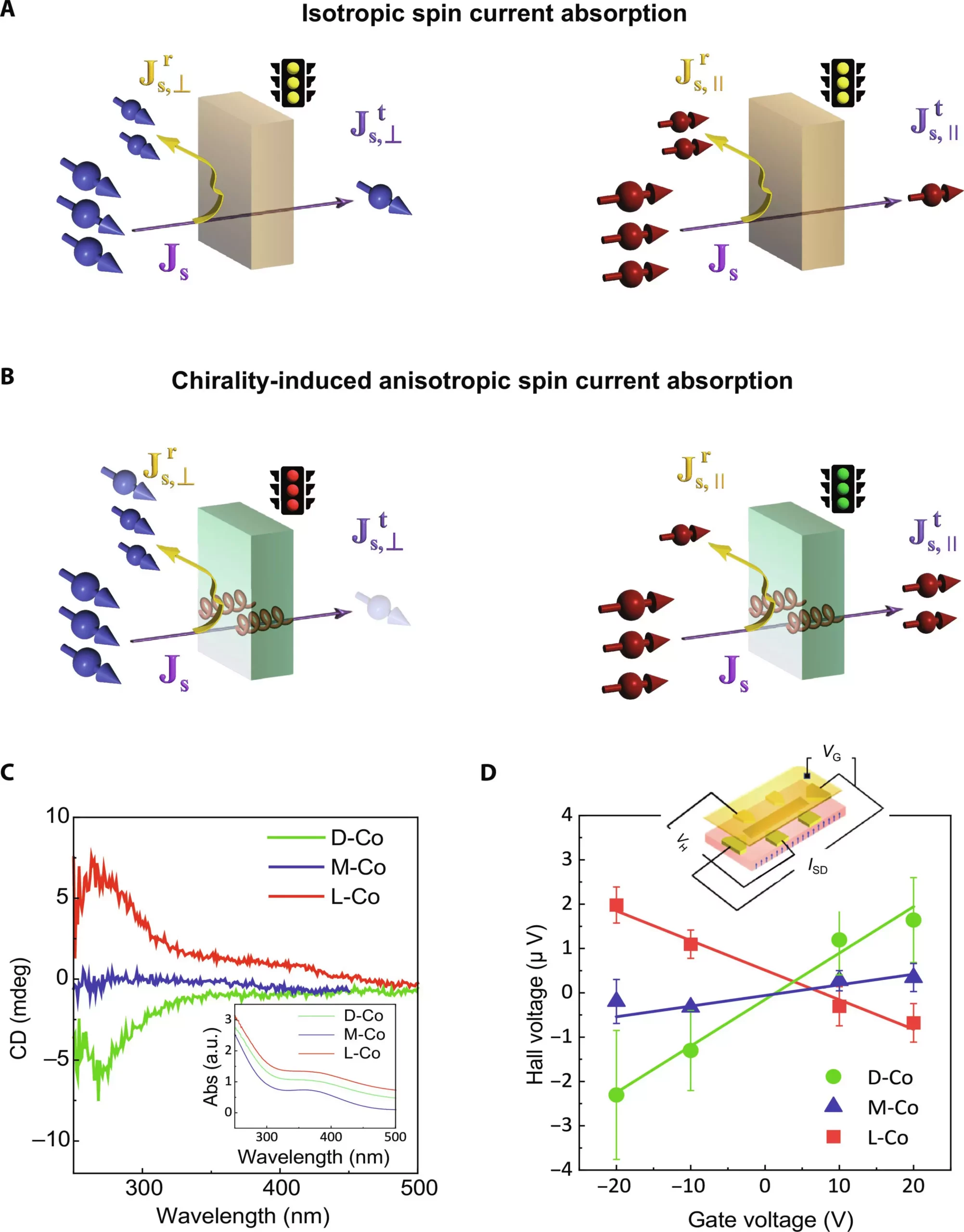In a groundbreaking study conducted by researchers at North Carolina State University and the University of Pittsburgh, the movement of spin information in electron particles, known as pure spin current, within chiral materials was closely examined. The researchers discovered that the direction in which spins are introduced into these chiral materials plays a crucial role in their ability to pass through them. These findings have significant implications for the development of energy-efficient spintronic devices that can revolutionize data storage, communication, and computing technologies.
Chiral solids refer to materials that exhibit asymmetry and cannot be superimposed on their mirror image, much like a left-handed glove not fitting on the right hand. The concept of chirality in spintronic materials allows researchers to manipulate the direction of spin within the material. Contrary to previous beliefs, the researchers found that the spin’s ability to move through a chiral material is heavily influenced by the angle between the spin polarization and the chiral axis, rather than just the material’s chirality.
The research team utilized two distinct methods, microwave particle excitation and ultrafast laser heating, to introduce pure spin into selected chiral materials. Both approaches yielded consistent results, highlighting the importance of the spin’s alignment relative to the chiral axis. Specifically, when the spin was aligned perpendicular to the material’s chiral axis, its movement through the material was hindered. However, aligning the spin parallel or anti-parallel to the chiral axis led to a significant enhancement in its absorption by the material, demonstrating a 3000% improvement in its ability to pass through.
The implications of these findings are profound in the realm of spintronics, where the objective is to transmit spin information without the necessity of moving the associated charge, which consumes more energy and leads to heating in electronic devices. By leveraging the unique properties of chiral materials as “gateways” for spin, researchers can potentially design highly efficient spintronic devices that minimize energy consumption and heat generation, offering a new frontier in electronic technology.
Future Directions and Implications
The study challenges conventional assumptions about the relationship between chiral materials and spin, opening up new avenues for exploration in this field. The researchers envision the development of chiral gateways that enable the unidirectional flow of spin information, paving the way for enhanced electronic devices with superior energy efficiency. The work, published in Science Advances, marks a significant step towards harnessing the full potential of chiral materials in advancing spintronic technologies.
The study sheds light on the intricate interplay between spin information and chiral materials, presenting a promising pathway for the design of next-generation spintronic devices. By reimagining the role of chirality in controlling spin polarization, researchers are poised to unlock unprecedented capabilities in the realm of electronic communication and computing.


Leave a Reply
You must be logged in to post a comment.